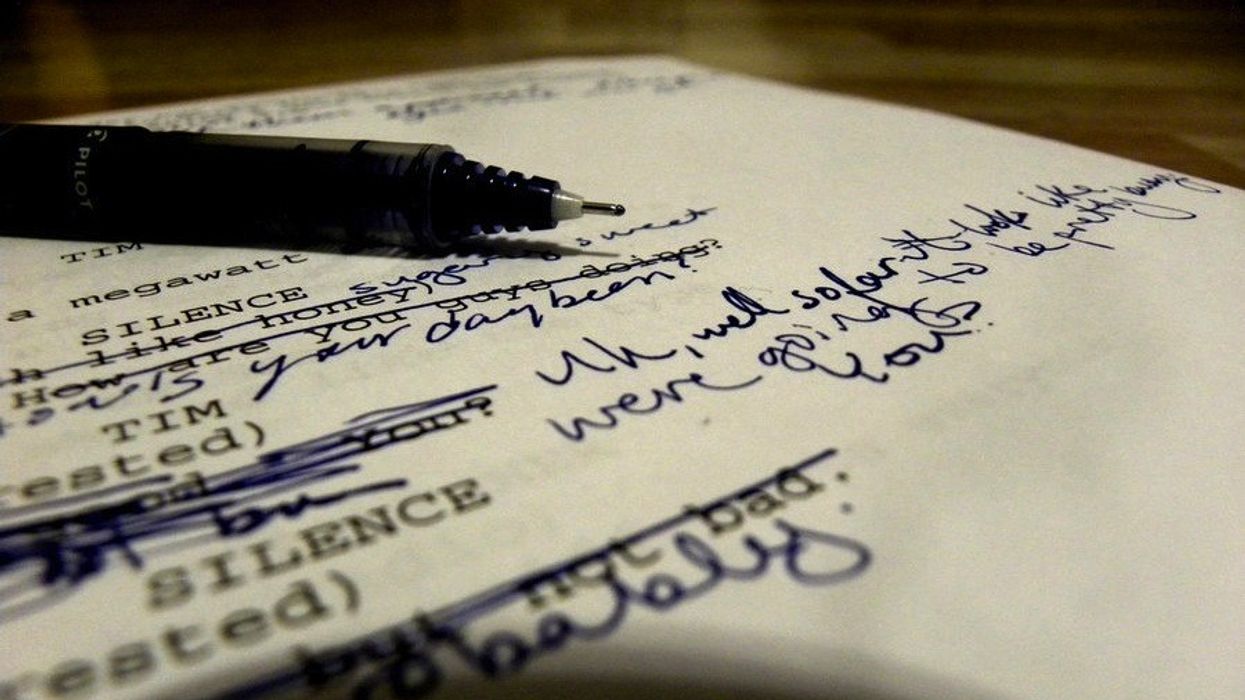In what stage of the screenwriting process are you? Are you right at the beginning, wildly jotting down an idea on a napkin, or are you finishing up your final (hopefully) rewrite? Regardless of where you are, have you, or are you considering whether or not your screenplay is has the elements financiers are looking for? MovieMaker Magazine has provided a list of script criteria commonly desired by investors, offered so you can potentially avoid writing a great, but unsellable screenplay.
Now, I always pause a little bit when I see lists like this, because not everybody wants to cater their art to the tastes of others. But, this list is just good practice, especially if you've just started screenwriting. Let me mention, there are no hard and fast rules for -- anything really, but especially for creative endeavors like writing scripts, but I've selected a few suggestions from MovieMaker's article that I think will help you make your screenplays better, as well as more appealing toward buyers.
Know Your Genre
Again, no hard and fast rules, but there are definitely cinematic conventions that audiences are used to watching, and therefore expect to see on the screen. Investors aren't known to be huge risk-takers, so they tend to shy away from scripts that defy conventions, even if they do so successfully! Even if you're wanting to produce your own script, learning what's typical in your genre will arm you with the knowledge to either follow the rules or break them skillfully. MovieMaker says:
Investors aren’t looking to give you money—they’re looking to make it. So they want to know that you’ve got something marketable, something audiences want to see. Different genres have clearly defined fan bases and proven track records. Investors know what to expect with specific genres, both in terms of the story and audience appeal.
The Three Cs
"Character, challenge, and change." Those are the Three Cs. In my opinion, this is one of the most important aspects of storytelling, because you're dealing with something that will guide your audience through the narrative on a psychological and emotional level. If the viewer doesn't make a connection to your character(s), then they won't make one with your film.
An audience must know with whom they are going to spend the next two hours—whose mind they are going to enter. Therefore it is necessary to set up who the protagonist is, what he or she must overcome and in the end show how the challenge has changed the character. All too often a writer will play the plot and not the characters. But it is the characters that audiences relate to, root for and connect with; it is the characters that serve as our surrogates and our guides into the world we enter.
"Castability"
This is one of those considerations I dream of making; does my screenplay have "castability?" This is something buyers will definitely be looking for in your script, but the point MovieMaker brings up is a good one whether or not you're looking to get it bought: if your story is engaging and interesting, and the characters you've written are complex and multi-dimensional, then actors will want to play in your movie.
What gives a script “castability?” It can be one or many things—a compelling story, rich and multi-dimensional characters, fabulous dialogue or even just one amazing scene packed with emotion and intensity. Different things will appeal to different actors, but the better developed each character is, the better the chance an actor will want to play it. One thing to do is to think about a specific actor you admire and what kinds of roles he or she might be itching to play.
To read the full list, check out the MovieMaker Magazine article here.
What do you think of the list? Let us know in the comments.













